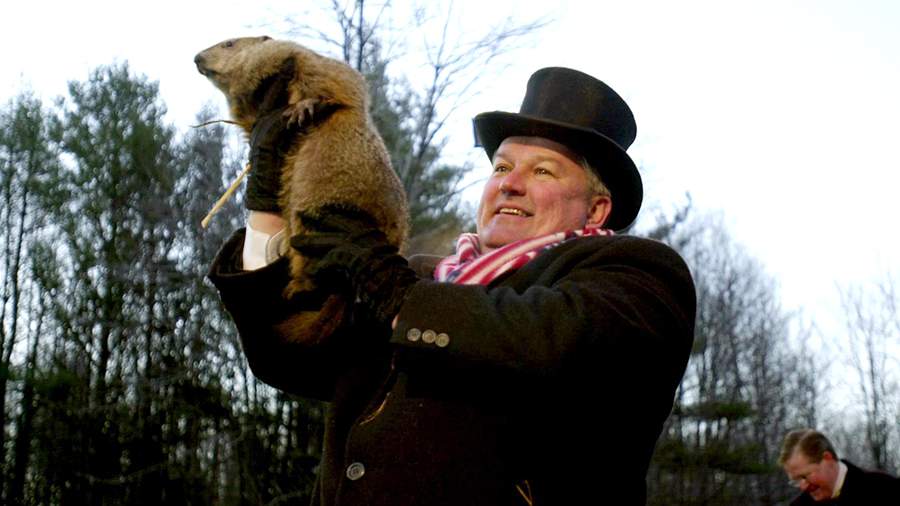February 2 - Groundhog Day: history, traditions and meaning of the holiday

Every year on February 2, some Western countries celebrate an unusual holiday - Groundhog Day. It falls in the middle of astronomical winter, when the air temperature begins to gradually rise. Hibernating animals are sensitive to changes in nature, so since ancient times people have observed their behavior to understand how long the cold weather will last. In 2025, the date falls on a Sunday. About its traditions, history and meaning read in the material "Izvestia".
Groundhog Day 2025 - European roots of the holiday
In different cultures and countries there has long been a tradition of observing nature and animal behavior in early February. People believed that it was the second day of the harshest winter month that could become a harbinger of the weather for the coming year.
Currently, Groundhog Day on February 2 is celebrated by the inhabitants of North America, but the tradition of the holiday has its roots in the history and beliefs of Europe. Similar examples are traced in the folklore of many peoples who associated this day with natural cycles, the change of seasons and weather predictions.
For example, the ancient Celts celebrated in early February holiday Imbolc, the day of the goddess Brigit, which symbolized the middle of winter and the approach of spring. It was believed that this period could determine how severe the remaining stretch of winter would be.
In ancient Rome, more than two thousand years ago, there was a tradition to celebrate Hedgehog Day on February 2. Romans woke up these animals and by their behavior tried to predict what spring would be. Over time, the holiday became established in the Germanic lands.
With the spread of Christianity, the traditions of nature observation became intertwined with the Feast of the Presentation of the Lord, the day of the meeting of winter and spring, which according to the Gregorian calendar is celebrated on February 2. In England, there was also a belief that if the weather on that day was sunny, winter would last a long time.
History of the world fame of Groundhog Day
In the XVIII-XIX centuries, German immigrants transferred the custom of celebrating Hedgehog Day to Pennsylvania, where instead of a prickly animal, the groundhog became the main "meteorologist", as these animals were common in North America.
The first written records of groundhog sightings in the United States date back to 1840. Then a resident of Pennsylvania James Morris suggested in his diary that his neighbors were watching the animal to find out the weather forecast.
However, the real impetus for popularizing the holiday came from local newspaper editor Clymer Fries, who published a humorous note in 1886 that the local groundhog had not seen its shadow, which meant that spring would be early. The article also pointed out the best place to watch was a small hill called Turkey Hill.
The following year, locals enthusiastically embraced the idea and organized the first public groundhog watching ceremony. Soon the "Punxsutawney Groundhog Club" came into existence and took on the role of organizing the annual event.
In 1887, the first marmot weatherman was an animal named Phil of Punxsutawney. "Phil of Punxsutawney is the clairvoyant of clairvoyants, the sage of sages, the soothsayer of soothsayers, the outstanding weather seer," the township said of him.
According to legend, the animal was already more than 100 years old at that time. Such longevity was allegedly ensured by a secret elixir, which was annually fed to the animal by members of the Groundhog Club.
The ceremony is held annually and was canceled only once - in 1942 after the Japanese attack on Pearl Harbor. For a long time, the holiday remained a localized Pennsylvania pastime. Everything changed the feature film "Groundhog Day" starring Bill Murray, which was released in 1993. The tape made Phil world-famous.
The picture about a journalist caught in a time loop in Punxsutawney turned a local celebration into a tourist phenomenon. Already in 1997, 35,000 people gathered at the ceremony in Pennsylvania. Thanks to this movie, the phrase "Groundhog Day" became synonymous with monotony and repetitive events.
Today, the tradition extends far beyond Pennsylvania. Every region has its own "weather forecaster." Despite the questionable accuracy of such forecasts (about 40%), the holiday remains a favorite symbol of hope for a soon spring.
Traditions and omens of Groundhog Day, celebrated in February
Every year on the holiday, the groundhog is observed coming out of its burrow after winter hibernation. It is believed that if the day is cloudy and the groundhog does not see its shadow, it quietly leaves the burrow, which heralds an early spring. If the day is sunny, the groundhog sees its shadow and hides back. This means winter will last another six weeks.
People also gather at special events to observe nature, participate in festivals and fairs. The holiday includes parades, costume shows, themed contests and raffles. Cafes and restaurants prepare special dishes, such as "Groundhog cookies" with predictions.
Earlier "Izvestia" told about the traditions of celebrating Tatiana's Day in Russia.
Переведено сервисом «Яндекс Переводчик»
